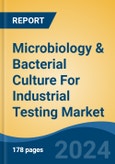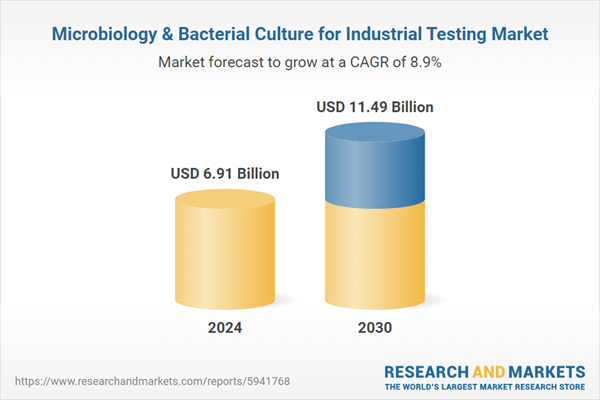Media is the fastest growing segment, Asia-Pacific is the largest market globally
Speak directly to the analyst to clarify any post sales queries you may have.
10% Free customizationThis report comes with 10% free customization, enabling you to add data that meets your specific business needs.
Key Market Drivers
The rising global burden of foodborne illnesses and escalating food safety concerns are profoundly impacting the Global Microbiology & Bacterial Culture For Industrial Testing Market. Consumers and regulatory bodies demand enhanced scrutiny over food products, driving manufacturers to implement more stringent and frequent microbial testing across supply chains. This imperative to safeguard public health and mitigate economic losses from product recalls directly fuels the demand for advanced bacterial culture media, rapid detection systems, and comprehensive testing services.Key Market Challenges
The high capital cost associated with acquiring advanced testing equipment and managing the inherent operational complexities of these systems presents a significant impediment to the growth of the Global Microbiology & Bacterial Culture For Industrial Testing Market. This financial barrier directly restricts smaller and medium-sized enterprises from investing in the latest microbial detection and characterization technologies, which are often necessary to meet increasingly stringent global regulatory standards and consumer demands for product safety. The substantial upfront expenditure, coupled with ongoing maintenance and the need for specialized personnel to operate complex machinery, limits the adoption of these solutions, particularly in emerging markets or industries with tighter budgetary constraints.Key Market Trends
The integration of artificial intelligence (AI) in microbial testing and fermentation is significantly transforming the Global Microbiology & Bacterial Culture For Industrial Testing Market by enhancing efficiency, accuracy, and predictive capabilities. AI-powered systems leverage machine learning algorithms to analyze vast datasets from microbial cultures, accelerating pathogen identification, optimizing fermentation processes, and enabling real-time quality control. For example, Lonza's AI-enabled root scouting offering secured a win in the API development and innovation category at CPHI Milan in November 2024, highlighting the industry's increasing recognition of artificial intelligence solutions in pharmaceutical manufacturing.Key Market Players Profiled:
- Bio-Rad Laboratories, Inc.
- BIOMERIEUX SA
- Thermo Fisher Scientific, Inc.
- Merck KGaA
- Neogen Corp
- HiMedia Laboratories Pvt. Ltd
- Eiken Chemical Co., Ltd.
- Titan Bio-tech Ltd
Report Scope:
In this report, the Global Microbiology & Bacterial Culture For Industrial Testing Market has been segmented into the following categories:By Consumables:
- Media
- Reagents
- Sera
By Application:
- Food & Water Testing
- Bioenergy & Agricultural Research
- Others
By Region:
- North America
- Europe
- Asia Pacific
- South America
- Middle East & Africa
Competitive Landscape
Company Profiles: Detailed analysis of the major companies present in the Global Microbiology & Bacterial Culture For Industrial Testing Market.Available Customizations:
With the given market data, the publisher offers customizations according to a company's specific needs. The following customization options are available for the report:- Detailed analysis and profiling of additional market players (up to five).
This product will be delivered within 1-3 business days.
Table of Contents
Companies Mentioned
- Bio-Rad Laboratories, Inc.
- BIOMERIEUX SA
- Thermo Fisher Scientific, Inc.
- Merck KGaA
- Neogen Corp
- HiMedia Laboratories Pvt. Ltd
- Eiken Chemical Co., Ltd.
- Titan Bio-tech Ltd
Table Information
| Report Attribute | Details |
|---|---|
| No. of Pages | 185 |
| Published | November 2025 |
| Forecast Period | 2024 - 2030 |
| Estimated Market Value ( USD | $ 6.91 Billion |
| Forecasted Market Value ( USD | $ 11.49 Billion |
| Compound Annual Growth Rate | 8.8% |
| Regions Covered | Global |
| No. of Companies Mentioned | 8 |








![Clinical Microbiology Market by Product (Instrument (Incubators), Analyzer (Microscope), Reagent, Kits, Media], Disease Area (Respiratory, Gastrointestinal, STD, UTI), End User (Hospitals, Diagnostic Center, Research Institutes) - Global Forecast to 2030 - Product Image](http://www.researchandmarkets.com/product_images/11979/11979906_60px_jpg/clinical_microbiology_market.jpg)
